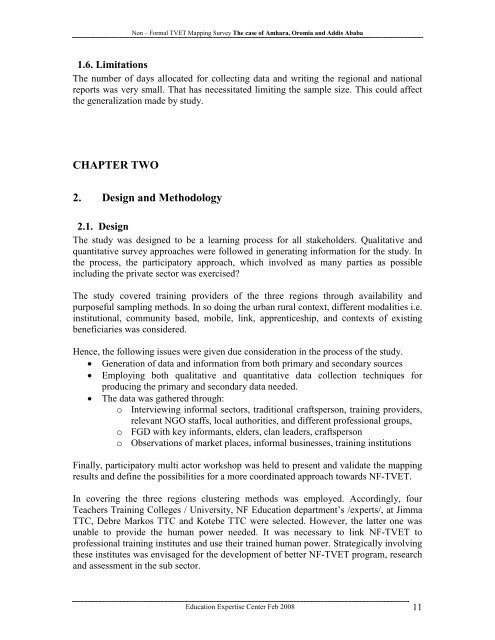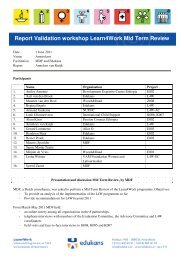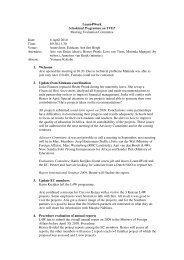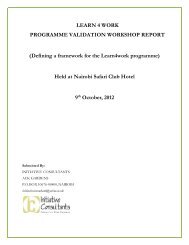Non â Formal TVET Mapping Survey Supported by Edukans ...
Non â Formal TVET Mapping Survey Supported by Edukans ...
Non â Formal TVET Mapping Survey Supported by Edukans ...
You also want an ePaper? Increase the reach of your titles
YUMPU automatically turns print PDFs into web optimized ePapers that Google loves.
<strong>Non</strong> – <strong>Formal</strong> <strong>TVET</strong> <strong>Mapping</strong> <strong>Survey</strong> The case of Amhara, Oromia and Addis Ababa<br />
1.6. Limitations<br />
The number of days allocated for collecting data and writing the regional and national<br />
reports was very small. That has necessitated limiting the sample size. This could affect<br />
the generalization made <strong>by</strong> study.<br />
CHAPTER TWO<br />
2. Design and Methodology<br />
2.1. Design<br />
The study was designed to be a learning process for all stakeholders. Qualitative and<br />
quantitative survey approaches were followed in generating information for the study. In<br />
the process, the participatory approach, which involved as many parties as possible<br />
including the private sector was exercised?<br />
The study covered training providers of the three regions through availability and<br />
purposeful sampling methods. In so doing the urban rural context, different modalities i.e.<br />
institutional, community based, mobile, link, apprenticeship, and contexts of existing<br />
beneficiaries was considered.<br />
Hence, the following issues were given due consideration in the process of the study.<br />
Generation of data and information from both primary and secondary sources<br />
Employing both qualitative and quantitative data collection techniques for<br />
producing the primary and secondary data needed.<br />
The data was gathered through:<br />
o Interviewing informal sectors, traditional craftsperson, training providers,<br />
relevant NGO staffs, local authorities, and different professional groups,<br />
o FGD with key informants, elders, clan leaders, craftsperson<br />
o Observations of market places, informal businesses, training institutions<br />
Finally, participatory multi actor workshop was held to present and validate the mapping<br />
results and define the possibilities for a more coordinated approach towards NF-<strong>TVET</strong>.<br />
In covering the three regions clustering methods was employed. Accordingly, four<br />
Teachers Training Colleges / University, NF Education department’s /experts/, at Jimma<br />
TTC, Debre Markos TTC and Kotebe TTC were selected. However, the latter one was<br />
unable to provide the human power needed. It was necessary to link NF-<strong>TVET</strong> to<br />
professional training institutes and use their trained human power. Strategically involving<br />
these institutes was envisaged for the development of better NF-<strong>TVET</strong> program, research<br />
and assessment in the sub sector.<br />
Education Expertise Center Feb 2008 11







